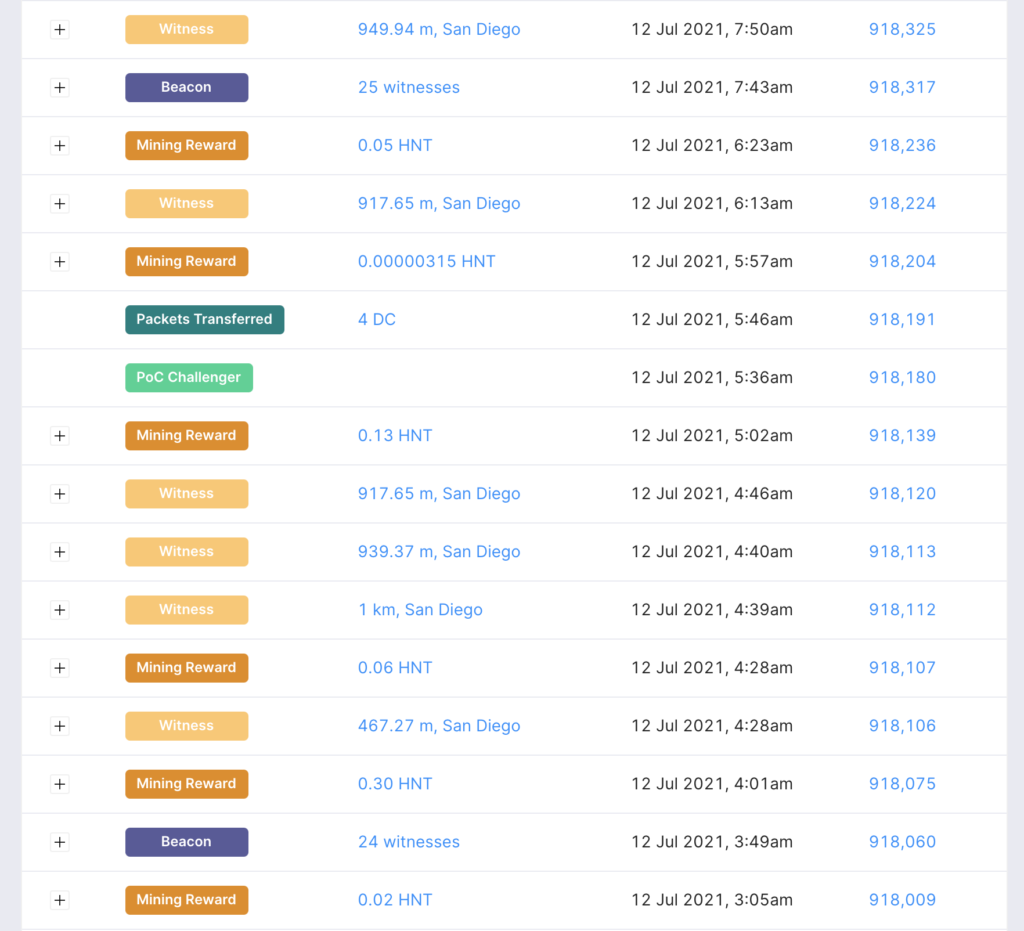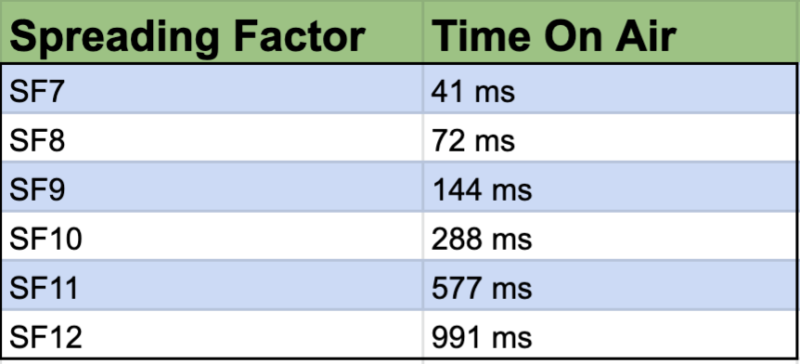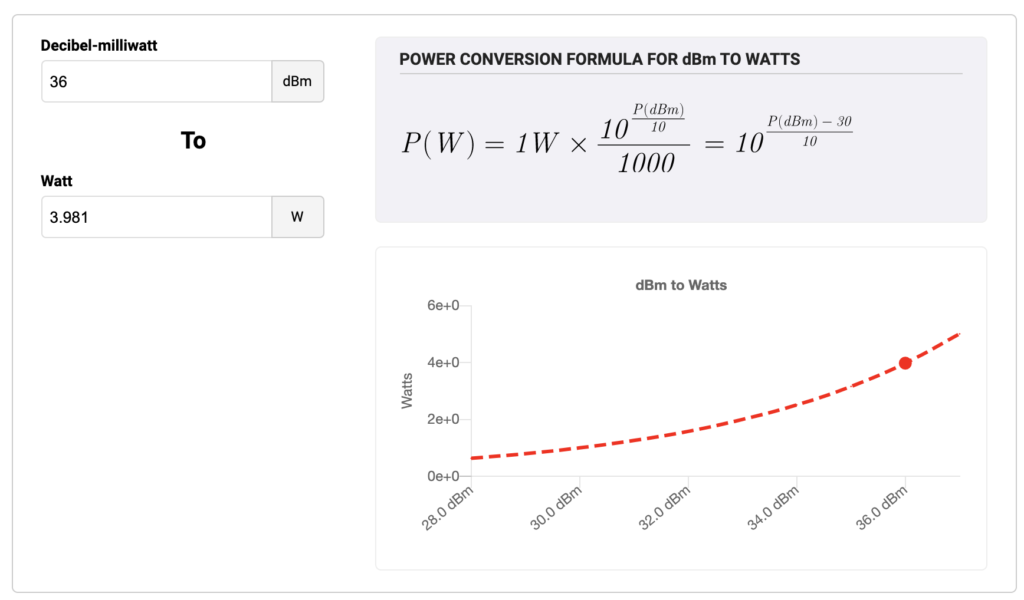Are Helium Hotspots dangerous to be around? How much RF energy do they emit? Should you or your hosts be worried about the exposure levels? Let’s run through the facts, then you can make your own decision.
We’ll start with this: In general, Helium Hotspots rarely emit any RF. They’re built to receive signals far better than transmit them. That’s because the whole point of the network is to “listen” for really faint signals from sensors at long range.
Still, Helium Hotspots DO occasionally transmit out power in the form of a “beacon”. Beaconing usually happens less than 3 times per day. Sometimes you’ll have a banner day and it’ll beacon 5 times. That’s unusual, so I’ll use 3 or less when making the calculations below. Just to be clear:
A beacon is a single transmission witnessed by any Hotspot.
https://docs.helium.com/blockchain/proof-of-coverage/
In this case you can ignore the “witnessed by a hotspot” aspect. For now we’re focusing solely on the power in a beacon, not whether or not it was received.
You can see how often your hotspot beacons just by checking on Helium Explorer. Here’s an example from one of mine on an unusually active day:

Yep, 2 beacons inside of 5 hours. We are bangin’! By the way, for those of you concerned with earning HNT, your “slice of the pie” for beaconing is relatively low, so don’t worry about “not beaconing enough”. Once a day is fine.
Back to RF exposure and power! Helium uses LoRa as a radio protocol, and what we call a “beacon” is technically a “chirp”. Let’s dig a little deeper on that. From Helium’s blog:
LoRa uses what is known as a “chirp” protocol and spreading factors (SF) are the duration of the “chirp”. Typically you’re looking at a range of SF7 to SF12 where the 7 is the shortest time on air. Each step up doubles the time on air to transmit the same amount of data and increases the range. Due to local restrictions, we are limited by max payload sizes to certain spreading factors, usually SF8 and SF9 for most packets.
https://engineering.helium.com/2020/10/02/spreading-factor-changes-poc.html
How long does an SF8 or SF9 (or even an SF 12) chirp last? Let’s take a look at this table from Semtech (the owner of LoRa technology). Here’s a screenshot:

There are 1,000 milliseconds (ms) in a second, so for all chirps, we’re looking at under a second of time that RF is being emitted.
Cool, so now we have a time established: Less than one second per beacon.
The next (obvious) question is: How strong are these beacons?
For those of you who’ve read the Cable Loss & EIRP post, you’ll remember that the most powerful hotspots (American hotspots) blast out a massive 27 dBm. I’m joking about the massive part. dBm stands for Decibel MilliWatts, and 27 is about half a watt. You can do this calculation yourself over at DigiKey’s website. I’ll make it easy and just paste it in here:

I can hear you say it: “Ok Nik, but what about when someone uses a MAXIMUM GAIN! (said in my best monster truck voice) antenna? In the US, the legal max antenna gain we can use is 9 dBi.
27 dBm + 9 dBi = 36 dBm. So, how many watts is that? Let’s cruise back to DigiKey’s calculator and see.

Holy smokes, almost 4 watts! That’s enough to fry a… Wait a second. How much power is 4 watts? Is there anything else we might possibly use for comparison?
Yep, you guessed it. Cell phones. Cell phones in general have 2 “levels” of power they emit: .6 watts, and 3 watts. Typically, most people use their cell phones while holding them within 2 feet of their face. If you have long-ass gibbon arms, maybe you can get it 3 feet away from your face. You can reduce your exposure by growing your arms or just following common sense guidelines.
When you are talking on a phone is when it emits the most power; it has to transmit your voice. At that point, you are holding a device to your head for more than a second (if watching people in public is any indication, it’s more like non-stop) that is emitting up to 3 watts.
Let’s go back to the Helium Hotspot one last time and just think about where it’s placed. While I recommend always placing it outside (NOT for RF exposure reasons, but to provide the best coverage), some people can’ t do that due to HOA or other building restrictions. So let’s assume worst case: In your house.
If it’s in your house, it’s unlikely that you hold your Helium Hotspot to your head. It’s probably on a table or by a window. Let’s say it’s reasonable to be at least 3 feet away from the antenna at all times. We’ll do a quick calculation check on that distance with the MAXIMUM POWER antenna to see what you’re being exposed to, using HintLink’s RF Exposure Calculator. By the way, a 9 dBi omni antenna (the maximum gain you can legally use) is about 4 feet long. Most people don’t like the way a 4′ long fiberglass pole looks inside the house.

Since I’ll assume that you’re not working in a Controlled Environment (think RF labs, or near super high RF emitters like a cell tower site), we’ll calculate the exposure based on the max limits you’d encounter in your ordinary life. In that case, (ah, fuck it, I’ll make this huge because this is my final answer.)
A Helium Hotspot emits .07% of the Maximum Permissible Exposure to RF devices. It does that for less than a second, less than 4 times per day.
I do know that some people are super sensitive to RF. If that’s you, it may not be the best idea to participate in the building the world’s largest wireless network. For the rest of ya, go deeper if you want, but after looking into it, this seems like enough for me to say that the RF being emitted from a Helium Hotspot is not something I’m going to worry about.
If you need more help with understanding Helium, whether you have antenna questions, want help with optimization, or just want to talk through the Helium ecosystem and how you can fit in, take a look at joining the Gristle Crüe.
Rock on!

Leave a Reply